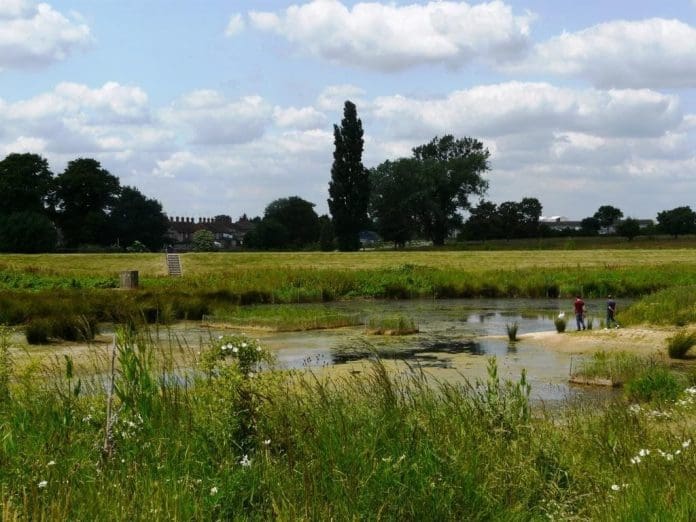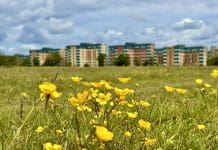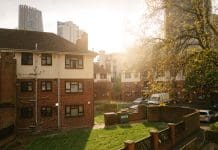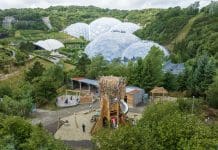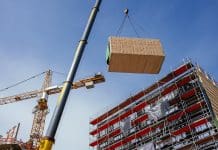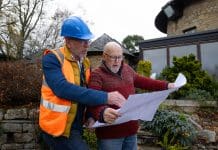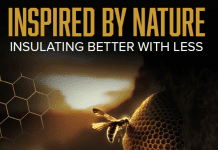Environment-led design is critical in addressing the climate, pollution, and related social challenges facing the built environment, says Kerry Whalley of Arup
Biodiversity net gain (BNG) is the new kid on the block in planning – an approach to developing land that aims to ensure nature is left in a better state than prior to development happening.
This is both a simple and complex requirement to be fulfilled by the built environment and infrastructure sectors; the related legislation now coming into effect has been campaigned for by agencies such as Natural England since 2018.
Combined with the need to deliver low-carbon development, and development that delivers strong social value, there is a move towards putting environmental and social considerations at the heart of project development.
It’s evident that our industry is evolving – beyond regulations coming into force, we are now experiencing a major collective shift towards environment-led design.
BNG rules come into effect from February 2024
From February 2024, planning permission will only be granted if a development can demonstrate a BNG of 10%.
In short, this means the natural environment’s concerns are now being put at the start and centre of planning processes – a convergence of regulatory requirements for development.
BNG is achieved by anticipating an individual scheme’s nature loss and then designing specifically to avoid and/or reverse that damage, in turn strengthening the habitats within and around the proposal.
By engaging with environmental experts as early as possible, the multifaceted benefits of nature-based solutions, including biodiversity enhancement, community health and wellbeing and reduced risk of financial loss due to weather extremes, can be embedded from the outset of a development project.
As with other environmental drivers such as reducing carbon, the easiest way to achieve net gain is to address the issue early – design to avoid loss of biodiversity and to embed enhancement opportunities. This means early consideration of target setting, outlining required outcomes and embedding them in all decision-making processes for design and delivery to be completely aligned.
Rethinking traditional processes
Throughout our varied work at Arup, it continues to be our experience that the projects undertaken with an environment-led design focus are more likely to deliver long-term value and a wider range of benefits to more people.
By both saving money and going beyond compliance, community and stakeholder support is mobilised.
In turn this can unlock further investment as the schemes demonstrate restorative longevity by going against the grain of traditional processes.
Traditional project development processes follow the linear approach of outlining a business case and then setting objectives, often related to the required deliverables of a scheme and their associated costs.
It’s common practice for early design work to then take place, and once preliminary decisions are made, the project’s environmental assessment may be initiated, steered heavily towards impacts and mitigation.
By contrast, environment-led design configures the approach so that the project’s level of ambition for sustainability is set at the very beginning.
This ensures a series of environmental, social, and economic outcomes are embedded in the development’s framework, meaning subsequent project delivery contracts are aligned to these objectives.
By designing for environmental and social outcomes in this way, the environmental assessment stage can help set the metrics for reporting progress – this demonstrates the objectives are achieved, delivering real-life value.
Shifting from theory to implementation
A key example of environment-led design in action is Beam Parklands, a project on the eastern edge of London. Arup was appointed to reimagine the derelict wasteland, once an abandoned hospital site, by the river Beam.
Over previous decades, it had become a dumping ground for old cars and waste, further contributing to the area’s need for regeneration and investment.
The original scope of work outlined the area’s need for enhanced flood storage capacity, acting as a climate adaptation measure for the surrounding 300 homes and businesses.
Working in partnership with the Environment Agency, we were able to put an environmental vision at the centre of the conceptual vision for the project, reimagining its functional use as a flood storage reservoir, offering protection to those in the local community as well as the nearby power station that continues to serve a third of London’s energy.
Most notably, our reconfigured approach enabled a new landmark greenspace for the city to be created, promoting biodiversity and wellbeing in a highly urbanised area. Now a thriving public parkland, we were able to unlock £4m in additional funding by demonstrating the wide range of environmental benefits embedded in the site’s reimagination.
This additional investment enabled the ambitions for the scheme to be realised, positively impacting and extending the possibilities for the future of its surrounding areas.
Beam Parkland shows that environment-led design is a crucial and powerful tool to be harnessed in addressing the climate, pollution and related social challenges that our towns and cities face.
Kerry Whalley
Director – climate and sustainability
Arup
Tel: +44 (0)113 242 8498
climateandsustainability@arup.com


